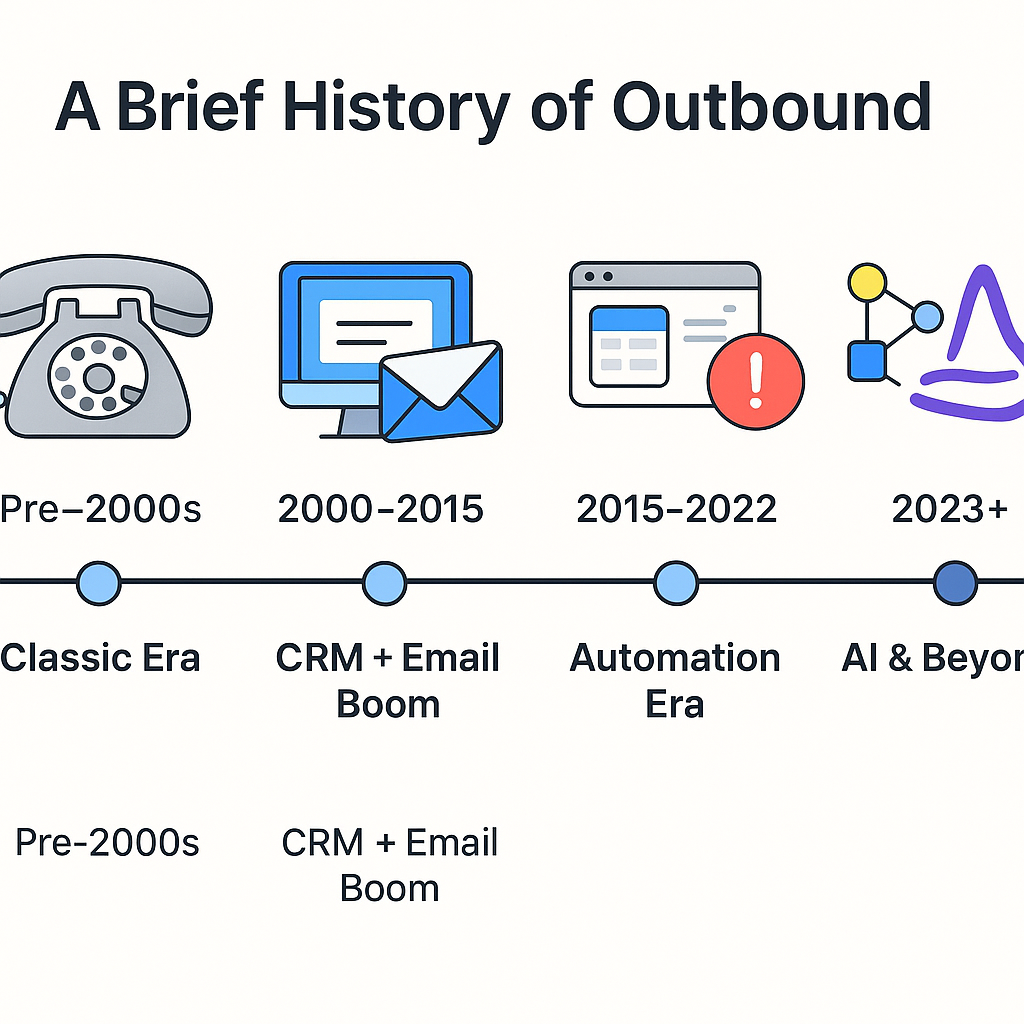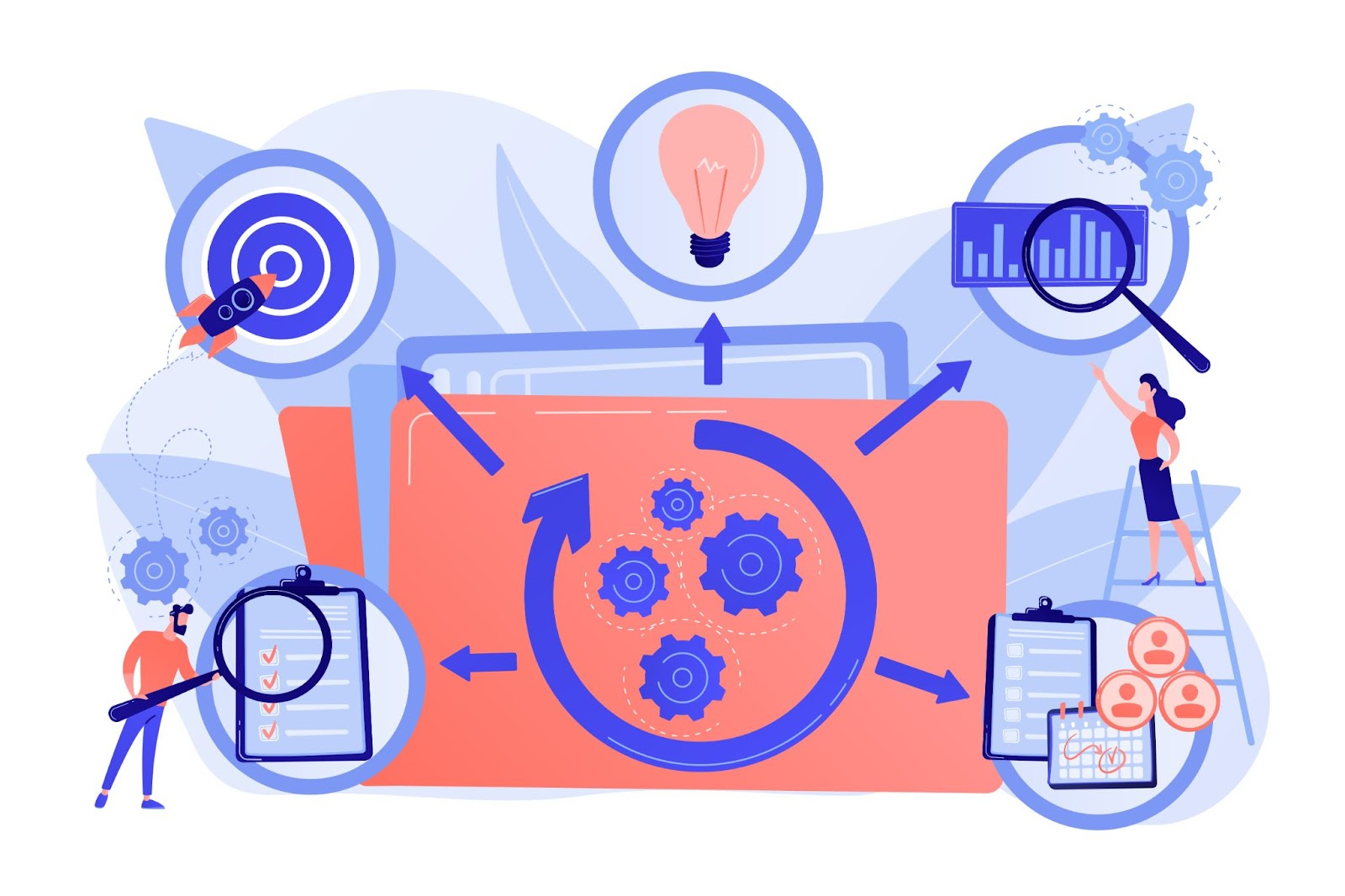Outbound sales isn’t a modern invention—it’s a discipline that’s evolved through every wave of business and technology. From the Rolodex era to AI-driven workflows, the one thing that’s stayed constant is this: outbound only works when it’s relevant and well-timed.
But how teams achieve that has changed radically.
In this article, we’ll trace the evolution of outbound—from door-knocking and cold calling to Clay-powered automation—and explore what the next generation of high-performing teams is already doing differently.
The Classic Era — Manual, Grit-Based Sales
Before 2000, outbound meant hustle. Field sales reps flipped through business directories, drove from meeting to meeting, and perfected the art of the cold call. Tools? A landline, a briefcase, and a CRM that looked more like a filing cabinet.
These early sales motions were time-consuming and built on personal relationships. Everything had to be done manually, from identifying prospects to following up—making it nearly impossible to scale quickly.
But they had an edge—true human connection. Every message was personal because there was no other option.

The CRM + Email Boom
From 2000 to 2015, outbound entered the digital age. Salesforce brought CRMs into the cloud, while platforms like HubSpot made email marketing accessible to B2B teams.
Reps started working from spreadsheets and uploading contact lists into sequencers. Mail merges let them send the same email to hundreds at once—with a first name token and a hope.
The new formula was: List → Sequence → Close
This era made outbound faster and cheaper—but it also made it noisier.
.png)
The Automation Arms Race
Between 2015 and 2022, outbound went full throttle.
Tools like Outreach, Lemlist, and Salesloft introduced complex sequencing, intent triggers, and multichannel touchpoints. SDR teams scaled rapidly, and the concept of "personalisation at scale" was everywhere.
But soon, buyers caught on.
Reply rates dropped. Prospects ignored emails that felt templated. Deliverability tools became stricter. Every new tool promised better outreach—but few changed the underlying approach.
This era brought higher send volumes, but also lower quality engagement and increasingly complex operations. Outreach efforts became more about quantity than quality, and teams often struggled to manage the tech stack that powered them.
The Shift Toward RevOps and Systemization
By 2023, high-growth teams realized outbound wasn’t a copywriting challenge—it was an infrastructure problem.
The rise of RevOps brought new priorities:
- Connecting data across platforms (CRM, LinkedIn, Clearbit, Crunchbase)
- Scoring leads dynamically
- Routing messaging based on signal strength
Platforms like Clay and Smartlead didn’t just speed up outbound—they changed the architecture. Now, teams were building full workflows: Data → Enrich → Score → Personalise → Sequence
Outbound moved from a static campaign to a living, learning system.
Want a deeper look into how this works in practice? We unpack it in this post on building a Clay-powered outbound engine.
What’s Next: The AI-Led, Feedback-Driven Era
We’re now entering a new chapter where AI + live data + RevOps logic drive outbound forward.
In 2025, outbound campaigns are increasingly defined by dynamic message generation—often powered by GPT—tailored to a recipient’s job activity, firmographics, and tech stack. Personalisation is no longer a manual task, but a structured process built into repeatable prompts. Lead data is refreshed in real time, ensuring that outreach is always relevant. And crucially, reply sentiment is monitored continuously and fed back into the workflow to improve messaging accuracy over time.
Outbound now behaves more like a product: launched, tested, improved.
.png)
What Will Separate Winning Teams in 2025
The teams winning outbound now and in the future aren’t sending more emails. They’re building better systems.
These teams treat outbound like an iterative product rather than a static playbook. Their workflows are modular and flexible, capable of adapting based on persona, segment, or signal strength. Rather than cobbling together separate tools, they build full-cycle automation—from lead sourcing to sequencing. Most importantly, they empower SDRs to become data operators who optimise systems, rather than simply act as email-sending machines.
For a breakdown of how this mindset shift powers leaner teams, see our piece on hiring SDRs with no budget or brand.

Final Word: Same Goal, Smarter Tools
At its core, outbound has always been about the right message to the right person at the right time.
That hasn’t changed. But the tools, data, and systems available today make it possible to do this at scale—and with intelligence.
The question isn’t whether outbound still works.
It’s whether your outbound is evolving—or stuck in a playbook built for 2016.

.jpeg)
.svg)
.png)


